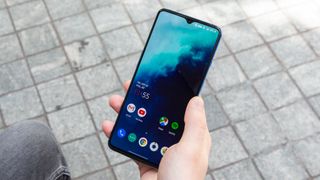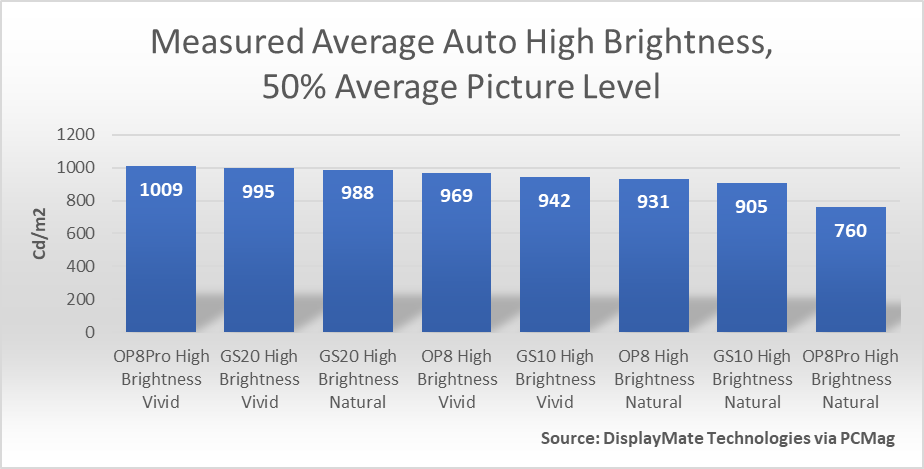OnePlus 8 Pro’s screen is going to beat Samsung Galaxy S20: Here’s why
OnePlus 8 Pro's screen is going to trounce Samsung Galaxy S20: Hither's why

With OnePlus' next big phone reveal effect less than 2 weeks abroad, on April 14, we're receiving a wealth of leaks surrounding the forthcoming OnePlus 8 lineup. And the latest comes via testing from DisplayMate that reveals some central information about the displays on the OnePlus 8 and OnePlus 8 Pro.
Every bit reported by PCMag, DisplayMate is obviously satisfied with the performance of the OnePlus 8 Pro's panel in particular, which is said to feature a "2K+ loftier-res display" and a 120Hz refresh rate, equaling the speed of the screens in the Samsung Galaxy S20 series.
- Looking for a new smartphone? These are the best phones available now
- The best cheap phones for budget shoppers
- Plus: The iPhone 9 will be the most important telephone of 2020 — here'south why
OnePlus CEO Pete Lau confirms in the story that the company has "once again cooperated with Samsung Brandish" in developing the OnePlus eight line. That's an important detail: the 120Hz panels utilized in the latest Galaxy handsets are among the brightest and smoothest-animative nosotros've ever tested at Tom'southward Guide, though they exercise come with i caveat: you lot tin can't run them at maximum resolution and refresh rate simultaneously. Galaxy S20 users are essentially forced to prioritize animation speed or sharpness, and it's unclear at this stage if the OnePlus 8 Pro volition inherit that limitation.
DisplayMate has too recorded record-setting brightness figures from the OnePlus viii Pro, which can apparently reach as high as 1,009 nits when set to automatic brightness, under loftier ambient lite and when fifty% of the panel is showing an image.

With automatic brightness off, the OnePlus 8 Pro apparently can't claim those same peaks, based on DisplayMate's assay. PCMag's Sascha Segan points out that many Android phones are prevented from hitting their true highest effulgence under manual settings — something nosotros likewise noticed when we tested the Milky way S20'south screens.
On the Galaxy S20 Plus in particular, we recorded a peak full-screen automatic brightness of 847 nits. That's not directly comparable to DisplayMate's methodology, which uses 50% of the screen, rather than a fully-lit display. (OLED panels tin can devote more luminosity to small-scale portions, rather than the entire screen as a whole).
Nevertheless, these numbers still demonstrate how phone makers are constantly ane-upping each other with regard to display quality, brightness and refresh rates with the launch of every new model. DisplayMate's findings likewise mention a new anti-reflective coating on the screens of OnePlus' new offerings, with the 8 Pro delivering "close to the lowest screen reflectance level [they've] always measured for a smartphone."
Last yr, OnePlus fabricated a strong marketing push behind the OnePlus 7 Pro's 90Hz Fluid AMOLED screen, saying it was the most advanced panel in whatever phone at the time of its release, and certainly more sophisticated than any screen OnePlus had ever fitted to any of its handsets upwards to that signal. With everything we now know about the OnePlus 8 and especially the Pro variant, information technology seems the company only intends to strengthen its commitment to display quality.
Source: https://www.tomsguide.com/news/oneplus-8-pros-screen-is-going-to-beat-samsung-galaxy-s20-heres-why
Posted by: samuelyounch.blogspot.com


0 Response to "OnePlus 8 Pro’s screen is going to beat Samsung Galaxy S20: Here’s why"
Post a Comment